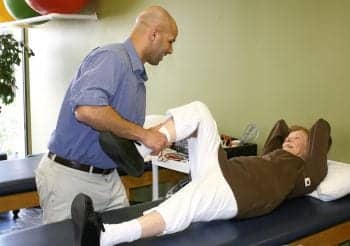 |
“I am aweary, give me leave awhile: Fie, how my bones ache!” —Juliet’s Nurse (Act II, Scene V), Romeo and Juliet, by William Shakespeare
According to statistics gathered by the Foundation for Osteoporosis Research and Education (FORE), more than 10 million people, worldwide, are living with the pain of osteoporosis, or serious bone loss, while another 34 million suffer from low bone density, which can eventually lead to more debilitating conditions. Among that number are more than 44 million Americans who currently face the prospect of osteoporosis, or serious bone loss, after the age of 50 (more than 80% of those stricken being women—although the number of men diagnosed with the condition is increasing steadily).
Commonly referred to as “the silent disease”—as it often goes undetected until it is too late—or “brittle bone disease”—as those who are diagnosed often experience devastating bone fractures—osteoporosis is defined by the National Osteoporosis Foundation as a “metabolic bone disease characterized by low bone mass and microarchitectural deterioration of bone tissue leading to enhanced bone fragility and a consequent increase in fracture risk.” It is crippling and debilitating, and manifests in serious musculoskeletal problems, shattered bones, and chronic pain, and rehabilitation professionals, including physicians, OTs, PTs, physiatrists, and nurses, can all become advocates for their clients seeking osteoporosis treatment and prevention.
For example, by encouraging early detection of osteoporosis through bone density screenings (often available at the local pharmacy), the rehab professional can help individuals make the decision to begin a treatment program as early as possible, thus delaying further bone loss and possibly avoiding injury. Next comes the educational process. Organizing osteoporosis prevention and wellness seminars to enlighten clients about the available protocols, such as alternative, drugless therapies—including modalities (such as CPM and massage) and exercise (such as aquatics, yoga, weight-bearing routines, and Pilates)—can bring many information-seeking potential clients into a practice. It is, also, important to include instruction on proper nutrition and supplementation. In fact, at the recent meeting of the International Osteoporosis Foundation, studies were released indicating that beginning good nutrition and a steady exercise regimen early in life is one of the best methods to prevent osteoporosis. (Also, don’t forget to emphasize the importance of avoiding smoking and excessive amounts of alcohol—these lifestyle choices directly affect the bones.)
The road to osteoporosis prevention and treatment is ongoing for both patients and practitioners, but think of the long-term benefits—on many levels—for all involved.
—Rogena Schuyler Silverman




